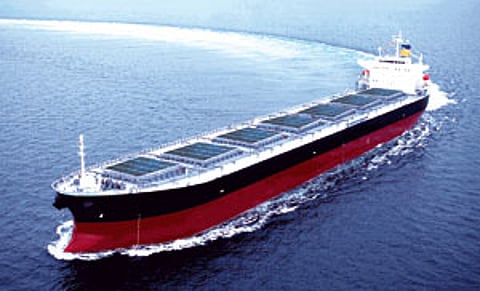

Rapidly rising fuel prices could mean a payback period of ten years for installing photovoltaic systems on merchant vessel newbuildings such as bulk carriers. For annual increases in fuel prices of around ten to 15 percent a year, the payback time varies from 16 to 27 years.
The solar radiation levels experienced at different latitudes are another key factor in determining payback time, says Dr Alexandros Glykas of the University of the Aegean, Greece, who performed the cost benefit analysis with colleagues from the National Technical University of Athens.
In order to maximise the solar plant efficiency, all solar panels should be placed above the deck of the vessel at a zero angle.
Hybrid systems that include batteries would increase payback time but a feasible alternative to the expense of batteries is to use excess electricity generated from the solar panels to electrolyse water.
The hydrogen generated could be stored and used in combination with the pilot fuel used for ignition. There is no clear answer on how energy storage would affect payback time.
"It depends on the cost of the hydrogen storage systems which currently cannot be found on the market easily," says Dr Glykas. "However, it is safe to claim that combining hydrogen in the whole system eventually reduces the payback period of the investment."
Wendy Laursen
